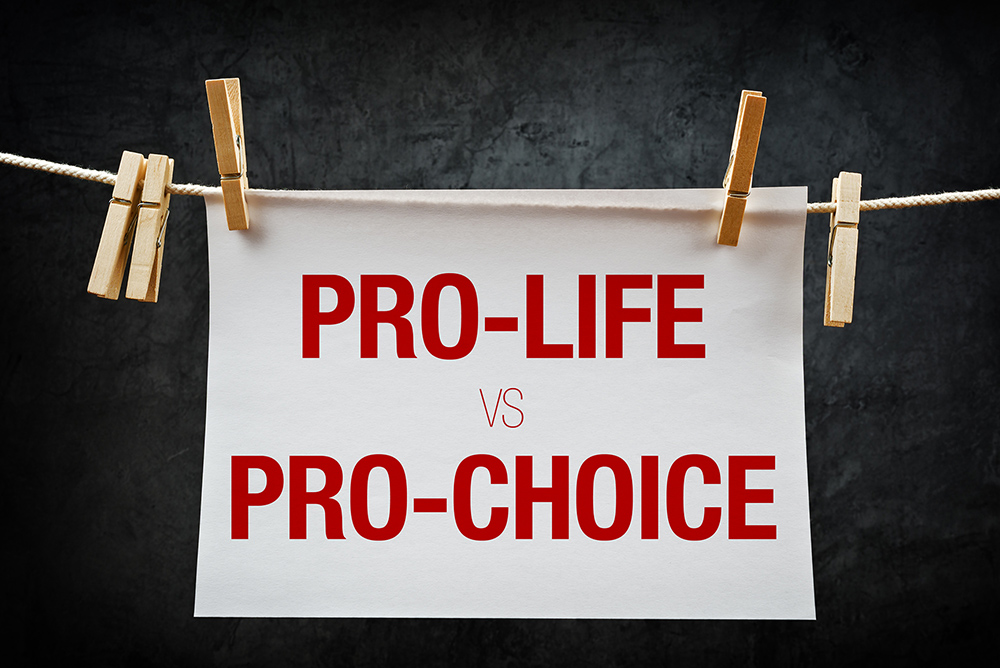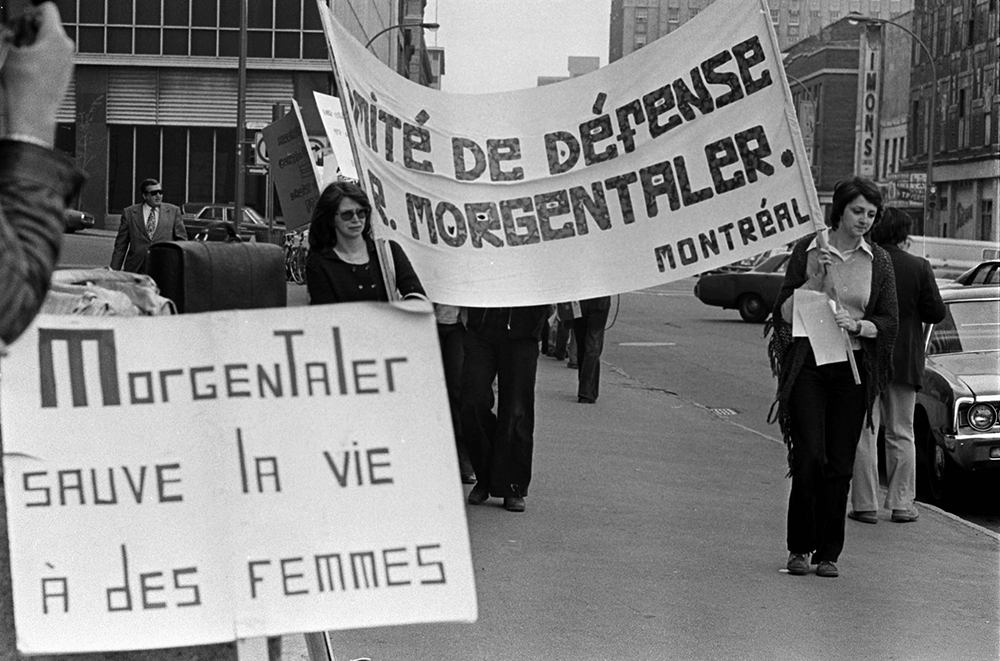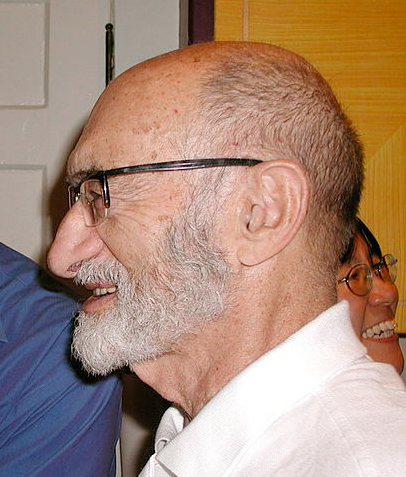Abortion is the premature ending of a pregnancy. Inducing an abortion was a crime in Canada until 1988, when the Supreme Court of Canada struck down the law as unconstitutional. Since then, abortion has been legal at any stage in a woman’s pregnancy. Abortion is publicly funded as a medical procedure under the Canada Health Act. (See Health Policy.) However, access to abortion services differs across the country. Despite its legalization, abortion remains one of the most divisive political issues of our time.

Crime of Abortion and 1969 Amendment
Prior to 1969, inducing an abortion was a crime under Section 251 of the Criminal Code. The maximum penalty for a doctor, or anyone else assisting a woman to end her pregnancy, was life imprisonment. If the woman herself was convicted, the penalty was two years.
One famous abortion case occurred in 1879. It involved Emily Stowe. She was the second Canadian woman to be licensed to practice medicine. Stowe was charged with performing an abortion on a young patient; through the administration of drugs. She was eventually acquitted after a long and high-profile trial. The prosecution of Stowe illustrated how seriously authorities viewed the crime of abortion in the late 19th century. By the mid-20th century, official attitudes had changed, and the abortion law was rarely enforced against doctors.
In 1969, the government of Prime Minister Pierre Trudeau amended the Criminal Code. Doctors were allowed to perform abortions in accredited hospitals if a pregnancy threatened the health or life of a woman. A committee of doctors was required to approve the procedure. In all other circumstances, abortion remained illegal.

Rights of Women versus Rights of the Unborn
Then and today, abortion has remained a divisive moral and political issue. It is condemned on one side by “pro-life” advocates, who seek to defend the unborn child; it is supported on the other by “pro-choice” advocates, who consider it a personal issue to be decided by the woman, not the state. Through the 1970s and 1980s, both pro-life groups (seeking a stricter abortion law) and pro-choice groups (seeking the legalization of abortion and public funding for it) organized large public rallies. These included demonstrations on Parliament Hill in Ottawa.
In 1967, during the early days of this debate, the Royal Commission on the Status of Women was convened by the federal government. After three years of public hearings, it issued a groundbreaking report on women’s affairs. The report recommended that abortion be made legal for the first 12 weeks of a pregnancy. It said that after 12 weeks, abortions should only be legal if the pregnancy threatened the health of the woman; or if the expected child would be born “greatly handicapped” mentally or physically.
Henry Morgentaler was prosecuted for performing unauthorized abortions. He was acquitted by a jury in 1973. However, on appeal, both the Quebec Court of Appeal and the Supreme Court of Canada overturned the jury finding. Morgentaler served a prison term.
The Supreme Court also found that the defence of necessity was theoretically available; that is, doctors might not be held criminally responsible if the result of not performing a particular abortion would be worse than doing nothing. Because of the circumstances of his case, such a defence was not specifically available for Morgentaler.
During this period, much of the legal debate focused around the question of whether a fetus has a right to life independent of its mother; and whether a woman’s liberty includes a right to choose to end a pregnancy. Legal challenges were brought by Joseph Borowski, a former Manitoba legislator, on behalf of fetal rights; as well as by Morgentaler in defence of his prosecution. The rights questions were not substantively settled by the courts in these cases.

1988 Supreme Court Decision
In the 1980s, Morgentaler was prosecuted again for providing abortions. In 1988, his case R. v Morgentaler went to the Supreme Court. It evaluated his actions this time in relation to the 1982 Charter of Rights and Freedoms. The court found that the Criminal Code provision on abortion violated a woman’s right to “life, liberty and security of the person” guaranteed under Section 7 of the Charter. Chief Justice Brian Dickson wrote: “Forcing a woman, by threat of criminal sanction to carry a foetus [sic] to term unless she meets certain criteria unrelated to her own priorities and aspirations, is a profound interference with a woman’s body and thus a violation of her security of the person.”
Specifically, the court did not say there was an inherent right to abortion under the Charter. Rather, it said the system regulating access to abortions — particularly the hospital review committees that were meant to approve abortion requests — had so many barriers and operated so poorly that it was “manifestly unfair.” As a result, the abortion law was struck down. (It was repealed entirely in 2019.) Because no other law has replaced it, abortion has remained legal throughout Canada since 1988.
Meanwhile, the fetal rights issue was ultimately decided in the 1989 case Tremblay v Daigle. The Supreme Court found that only a person had constitutional rights, and that such rights began at the time of live birth. The Court also decided that the father of a fetus has no proprietary interest in a fetus; he may not obtain an injunction to prevent a woman from exercising her right of choice to have an abortion.

1990 House of Commons Vote
In 1990, the House of Commons voted in favour (140–131) of a new law. Introduced by the Progressive Conservative government of Prime Minister Brian Mulroney, it sought to criminalize abortion once again. The new law would have allowed the procedure — under a streamlined review process — only if a doctor determined that a woman’s health was threatened by her pregnancy. However, the bill died in the Senate in January 1991 and never became law.
Other Canadian courts have also reviewed various attempts by provinces and municipalities to restrict the right of pregnant women to obtain abortions. All such legal attempts failed.
Access to Abortion Services
In the wake of the 1988 Supreme Court ruling, abortion became a publicly-funded medical service. It was available in many hospitals; as well as in private clinics, such as those established by Morgentaler in major urban centers. However, services are not uniformly available across the country. This is particularly true in rural areas and in parts of Atlantic Canada.
In Canada, the provinces administer public medical services. (See Distribution of Powers.) With this power, some provincial governments have tried to ban private abortion clinics; or refused to fully fund them out of the public purse. In 1993, Morgentaler challenged the Nova Scotia Medical Services Act all the way to the Supreme Court. It struck down the provincial law banning abortion clinics in that province. Also in the 1990s, the governments of Alberta and Newfoundland and Labrador were penalized under the federal government’s Canada Health Act for allowing private billing at provincial abortion clinics. After the penalties, the provinces agreed to fully fund the clinics.
In New Brunswick, private abortion clinics have been unable to obtain public funding. This makes access to the procedure more difficult there. In Prince Edward Island, abortion services were not available at all until January 2017. However, PEI women seeking publicly-funded abortions can obtain them in nearby New Brunswick hospitals.

Recent Political Response
Since the 1988 ruling, abortion has continued to be a hot-button political issue. Opinion surveys consistently show Canadians divided on the matter. In 2010, an EKOS/Globe and Mail survey found that a slim majority of Canadians, 52 per cent, were pro-choice; 27 per cent were pro-life. The remaining 21 per cent would not affiliate with either camp.
As a result, federal political parties and governments since 1990 have generally avoided abortion as a topic of parliamentary debate. They prefer to let the Supreme Court have the last word on the subject; rather than enact new legislation that could either formalize the existing system, or change it in some way. Several individual members of Parliament have introduced private members bills in recent decades — on both sides of the abortion debate. None have made it through the House of Commons and therefore have not become law.
The abortion issue received arguably its highest profile in decades in 2020, when it was championed by pro-life candidate Leslyn Lewis during the Conservative Party leadership campaign that summer. A unilingual lawyer with no experience in government, Lewis had little chance of becoming leader. Nevertheless, the social conservative made banning some abortions a central part of her campaign. She was endorsed by the anti-abortion advocacy group Right Now and raised nearly $2 million. Her surprisingly strong showing at the convention — she led the popular vote on the second ballot before falling off in subsequent voting — illustrated the viability of abortion as an issue within the Conservative Party.
Abortion Pill
In July 2015, after a lengthy review process, the federal government allowed Canadian doctors to begin prescribing Mifegymiso; a drug regime more commonly known as the “abortion pill.” The two drugs that make up Mifegymiso allow women to end an early pregnancy (within 49 days of becoming pregnant) at home. Designed in part to improve access to abortion, the drugs act by inducing a miscarriage.
Unlike with other medical drugs, the federal government requires doctors to dispense Mifegymiso directly to patients; rather than sending them with a prescription to a pharmacy. However, those rules may be loosened in some provinces. Doctors are also required to take an online training course before they can dispense it. Women’s health advocates have criticized these rules; they say they unnecessarily complicate access to the drugs, and make it difficult for doctors with small practices, especially in rural areas, to stock supplies of it.
See also Birth Control; Bioethics; Status of Women; Council on the Status of Women; Women and the Law.

 Share on Facebook
Share on Facebook Share on X
Share on X Share by Email
Share by Email Share on Google Classroom
Share on Google Classroom




